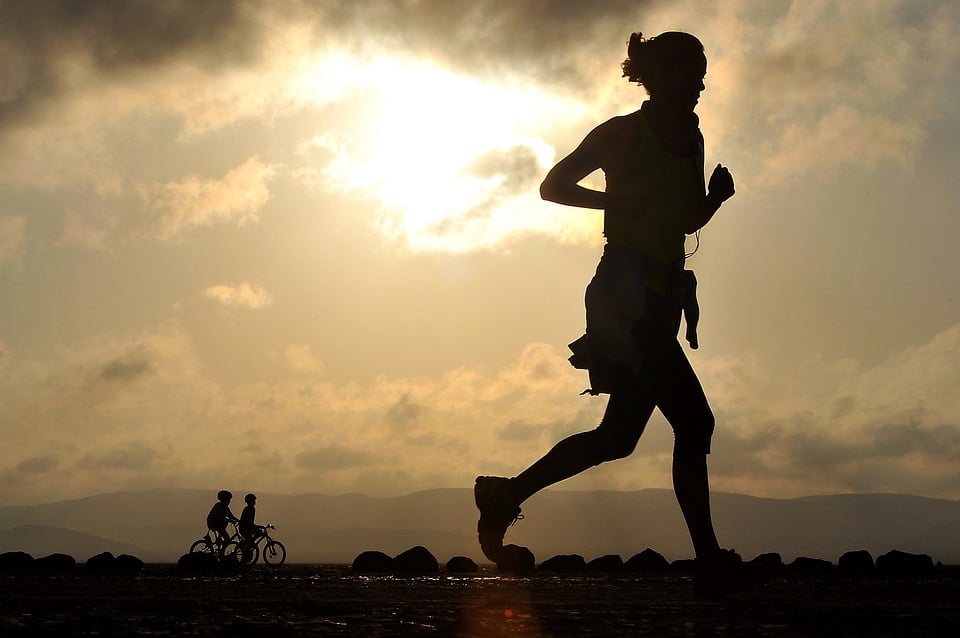Running is a great way to stay in shape. However, extended jogging has its risks and other downsides. As your body adjusts to longer distances, it begins to conserve energy and operate far more efficiently, reducing the calories you burn.
This isn’t exclusive to running: the same thing happens whenever your body adapts to one activity you perform over and over again. HIIT running, with the acronym standing for “High-Intensity Interval Training,” is one popular solution to this exercise dilemma. Essentially, even though you may be covering a great distance every day, your body starts finding better ways to use the calories.
Weight loss may stall or you may not feel the benefits you did before. Due to this phenomenon, you may wish to find ways to mix up your running routine. Trying a new approach like HIIT running keeps your body guessing and, in effect, confuses your muscles back into full toning mode.
Even if you may reduce the total time and distances you run, high-intensity training may give you better results and help you burn more calories over the course of your workout. One proven way to accomplish this is with HIIT running. This program is beneficial not only for burning calories but for strengthening your heart and working different muscles as well. So if you’re looking for a way to increase the calories you’re burning, now is the perfect time to consider HIIT running.
What Is A HIIT Running Workout?
Image Source: Pixabay
Again, HIIT is short for high-intensity interval training, HIIT running is when you go hard for short amounts of time and take breaks in between. When you go running today, you’re likely not sprinting the entire distance. You may jog and keep a steady pace throughout the entire course of your running, perhaps striving to finish with a sprint.
It may help to think of HIIT running as like driving a car. You burn more fuel when you must accelerate, stop and start. and work around traffic. When on the highway, when you’re able to put your vehicle in cruise control, it becomes far more fuel efficient and reduces the gas consumed. Essentially, your body and calories work that same way.
The more you stop and start, and the more you need to speed up and slow down, the more calories you burn because your body isn’t able to move into its own cruise control mode.
In order to see an improvement in the number of calories you burn during a running workout you want to take advantage of all that stopping, restarting, and revving up your engine. In a HIIT running workout, you will sprint as hard as you can for a short amount of time.
This revs up your fat burning engine and your heart rate. At the conclusion of that sprint, you’ll drop to a walk (or a slight jog). This allows your heart rate to come back down and it allows you to regain your energy.
Going from sprinting to light running and back again also works two different kinds of critical muscle fibers, according to experts in physiology and fitness: fast-twitch and slow-twitch fibers.
Fast Twitch VS. Slow Twitch Muscle Fiber
Have you ever wondered why sprinters cannot dominate long distance running? You don’t generally see someone who’s a sprinter and normally runs 100-meter dashes running marathons. On the flip side, you don’t see distance runners sprinting all that much, either.
Why is that? Outside of differing physical characteristics inherent in the two types of runner, this is because one has focused on developing slow-twitch muscles while the other may have strengthened fast-twitch muscles more effectively while training.
Fast-twitch muscle fibers are used for explosive movements like sprinting and jumping. If you’re lifting weights and you explode up a squat, for instance, that is a fast twitch. Making a jump stop in basketball is fast twitch as well. Basically, it’s anything you go all out for (and often suddenly). The energy you use for fast-twitch muscle activity burns up faster, and while it can replenish itself, it takes time.
As a brief aside, the dietary supplement creatine is mainly useful for supplementing fast-twitch fibers and movements. Your body naturally produces creatine, but fast twitch muscle movements use it up quickly and it takes time to replenish. If it contains more creatine, your body will have more fast-twitch energy, which is why it can help you pump out additional reps or sprint an added leg at the end of a race.
Slow-twitch muscle fiber is not explosive, but your muscles take longer to use it. This is the muscle fiber you use for distance activities, including long runs and swims. Because you’re using different kinds of muscle fibers for different activities, it can be difficult to cross over and perform equally well at both.
Benefits For Runners
Image Source: Pixabay
If you perform HIIT running activities, you’ll most likely see several benefits. Remember that you do not need to replace your jogging routine completely. After all, if you’re like many people it’s not just about burning calories. Jogging can be very therapeutic and it allows your mind to wander. You can just tack on HIIT running exercises at the end of your jogging (or at the beginning, depending on what you’re comfortable with).
Training For Both Fast- And Slow-Twitch Muscle Fibers
When you perform HIIT running activities, you’ll strengthen both types of muscle fiber. This is beneficial in that you’ll be able to perform in both explosive movements and endurance movements. If you’re considering a triathlon or similar activities, this is something you need to take advantage of.
Burn More Calories
When you take advantage of HIIT running exercises, you’ll keep your body’s muscles “confused” and developing at a good rate. When your body cannot predict what you’re going to subject it to for exercise, it has to burn calories. This even means you’ll burn more calories doing the same activities you did before.
Keep It Interesting
Jogging for long periods of time is great for the mind and helps you get outside, but it can also get boring. It’s the same thing day in and day out. By using HIIT running workouts, you’ll switch it up and keep things interesting. And, you can perform these HIIT running exercises both inside and on a treadmill (although it’s best if you can get outside, as then you’re able to take in the local scene).
Improve Running Performance Overall
With the help of HIIT running, you’ll improve both fast- and slow-twitch muscle conditioning, which then will help your performance in basically all kinds of running. Whether you’re a distance runner, a sprinter, or somewhere in between, working both muscle types will go a long way in improving your performance.
How To Get Started
Image Source: Pexels
With HIIT running exercises, you’re able to mix and match what works best for you. You can start off slow and focus on time or you can focus on distance. The beauty here is that you can always adjust the next workout to fit your personal needs, and you can start off as basic or as extreme as you want.
100-Meter Run-Walking
The best way to do this is on a track (although it is possible to do it on a treadmill). Begin by sprinting as hard as you can for 20 meters; then walk the next 80. When you reach the end of the first 100 meters, you’ll sprint as has as you can 40 meters, then walk the next 60. Push this to sprinting 60 meters and walking 40 and continue building until you sprint the entire 100 meters.
Distance Sprinting
Sometimes you’re not able to measure off how far you’ve run. In these instances, sprint as hard as you can for about 15 seconds and walk the next 45. Then increase this to 30 seconds sprinting and 30 seconds walking, followed by 45 seconds sprinting and 45 seconds walking. Finally, finish with a full minute running as hard as you can.
Off And On
You may find, especially when starting out, that building up your sprinting distance or time doesn’t work and you’re not able to make the last several rounds. When this happens, you can instead set aside 10 minutes for this on/off HIIT running exercise. Begin by running 30 seconds; then walk for 30 seconds. Repeat this up to 10 times. If you find you’re not able to sprint hard during the final few minutes, drop your sprinting down to 20 seconds and walk for 40. The purpose is to go as hard as you can for the entire time without letting up. Soon you’ll be able to sprint for longer distances.
Conclusion

Image Source: Pixabay
One of the best ways to burn calories and drop weight is with the aid of HIIT training. By using HIIT workouts you’ll also train your body better than ever by working both fast-twitch and slow-twitch muscle fibers. This will go a long way in helping you train for both short- and long-distance athletic activities. We hope you decide to bring HIIT running exercises into your routine.



